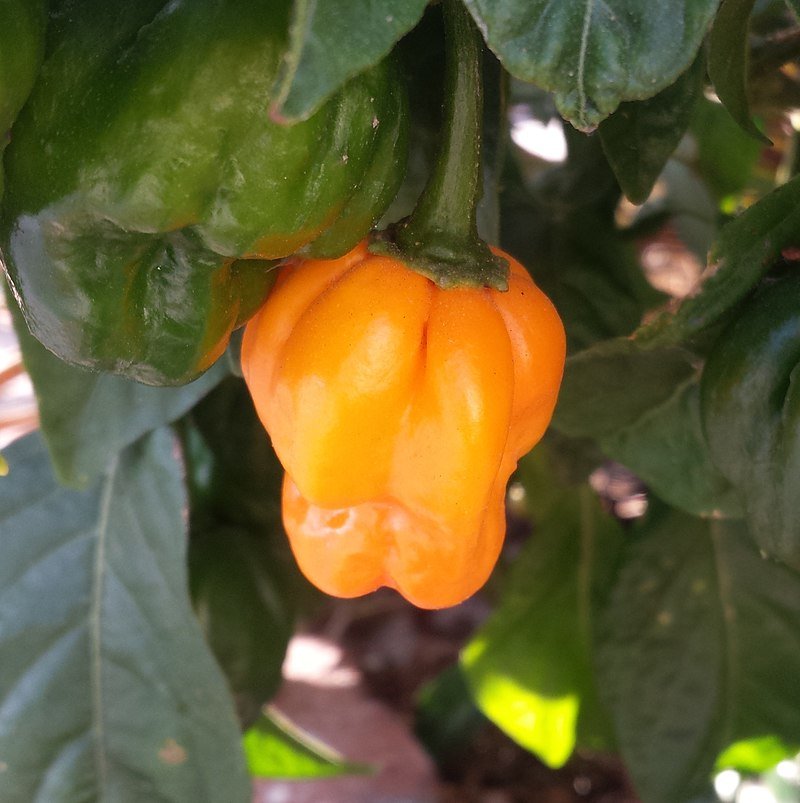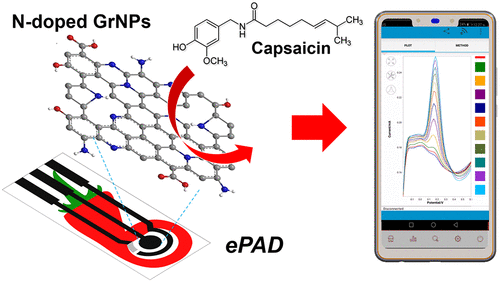How is Hotness Determined?
To determine how hot a variety of chili pepper will be, the compound responsible is Capsaicin, which measures the hotness. So basically the pepper will be treated hotter if the capsaicin levels are high. Pungency is one of the available methods used for quantifying just how much capsaicin is present in a dash of pepper but they are either too expensive or time-consuming or special equipment is required. This is not considered an ideal approach for widespread use.
New Device for Measuring Hotness
A simple, portable sensor device has been developed by a team of scientists from Prince of Songkla University in Thailand that can show how much capsaicin is contained in a given chili pepper sample by connecting to a smartphone. This was posted up in the journal, a new paper, in ACS Applied Nano Materials and a bonus feature being that the device is amusingly shaped just like a red-hot chili pepper.

Scoville Scale: What and When?
Scoville scale invented by Wilbur Scoville who is an American pharmacist which he named it after himself, can be used for assessing the relative hotness of chili peppers back in 1912. The process involves the extraction of capsaicinoids by dissolving a precise amount of dried pepper in alcohol. Then dilution of capsaicinoids is done in sugar water. Five trained testers are included in the panel who tastes the number of the sample with each sample having a decrement of concentration of capsaicinoids and this is carried till at least three out of five can no longer detect the heat in a given sample. Scoville heat units (SHU) is used to rate the hotness of the pepper.
Hotness Meter
For instance, the SHU rating of the Scotch bonnet and the habanero were between 100,000 to 350,000 while 3,500-10,000. SHU was the range of jalapeños and the humble bell pepper bottoms out at 0 SHU. Heat ratings above 1 million SHU were observed among the plethora of so-called “super-hots” which are namely the ghost pepper (Bhut jolokia) at 1.58 million SHU and the Naga Viper at 1.4 million SHU. Fierce competition in particular over who can cultivate the hottest chili pepper among chili growers in the US, UK, and Australia is prevalent. A US variety known as Pepper X has the hottest SHU rating to date which is around 3.18 million SHU, keeping aside that this SHU rating is not yet verified by Guinness World Records.

This record-breaking heat of super-hots can be due to one possible reason that as per the study in 2015 where fluorescence microscopy was used to determine storage of capsaicin in the skin as in the pith among the super-hot varieties which is not similar in conventional chili peppers where capsaicin is stored primarily in the pith. So it is quite certain that for super-hot varieties if the experienced cooks remove the pith and seeds while preparing peppers, it will also remove much of their intrinsic heat. This the reason why wearing gloves and eye protection is preferred by seasoned cooks know to handle super-hots as a single seed can result in the burning of the skin.
The drawback of the Scoville Scale
The Scoville scale method is pretty subjective and thus lends itself to imprecision which is an obvious drawback for measuring hotness. Although it is an estimation that the result can vary by 50% from different laboratories around the globe. For a check that different numbers of mouth heat receptors are found in different people and one’s palate can easily become desensitized to capsaicinoids. So as what happens with our muscles i.e. is fatigue, similar phenomena can occur to our sensory buds by tasting multiple samples in a row which can lead to sensory fatigue. In recent years methods like high-performance liquid chromatography have been in limelight along with other procedures like gas chromatography, spectrophotometry, or colorimetry.
Electrochemical Detection is the Answer

As per the authors of the new paper, these methods somehow carry a drawback like expensive instrumentation which is quite a complicated and very time-consuming process that would require hiring technicians to operate them. While on other hand there is increased research attention for electrochemical detection methods used for capsaicin determination in chili peppers and other samples. Their popularity is due to advantageous factors like rapidness, cost-effectiveness, simplified, and sensitive which are appropriate for onsite analysis.
In previous studies, according to Asamee Soleh and his co-author’s electrochemical methods have shown results that are having good accuracy, precision, and electrochemical efficiency which are typically based on modified electrodes. But there was always a need for an affordable and portable analytical tool that was acceptable to large scale expansion which they think an electrochemical paper-based analytical device (ePAD) can be an answer to it.
What is New Technology?
There are 3 major components in the new “Chilica-pod sensor” which are namely: the chili-shaped sensor, a smartphone interface, and a detection chamber. A filter and a disposable paper-based electrochemical sensor (ePAD) is contained in the detection chamber which consists of nitrogen-doped graphene nanoplatelets to enhance electrical conductivity. To confirm that the resulting oxidation and reduction reactions produced an electrical current, the researchers dropped some diluted capsaicin onto the sensor that could be detected by the ePAD.

Six samples of dried chilies were used to test the device by Soleh which were dissolved in an ethanol-based solution. The accuracy of the device was held for the device as they placed a drop in the detection chamber by measuring concentrations of capsaicin in all six samples. Verifications of these measurements were done by comparing results with techniques like spectrophotometry and found no significant difference between the two. The authors concluded that the fabrication and design strategy for portable sensors will lead to a path for new innovation in electrochemical sensors and biosensors.
